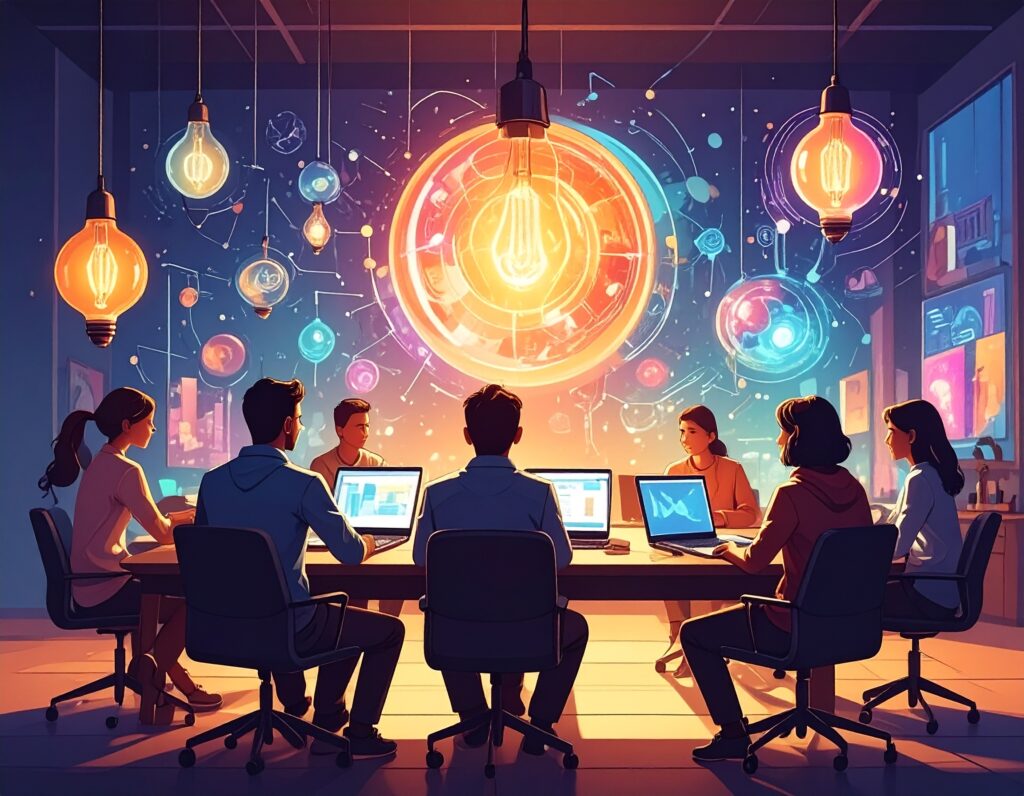Big Leadership Challenges, Meaningful Actions
Today’s Tuesday Reading is from Sean McDonald of MOR Associates. He may be reached at [email protected] or via LinkedIn.
Where do you start when taking on big leadership challenges (bigger than any one of us)? In last week’s Tuesday Reading, we focused on the current context facing higher education in the US, and how we could meet the moment. When asked where they could contribute and lead from where they are most, the top answer from readers was leveraging technology to increase efficiency and effectiveness.
What now?
Make time for strategic thinking
We need to step away from the day-to-day and gain a view from the balcony of the work. We need to rethink the work, focus on the mission-critical results, and rethink processes and technologies that no longer serve us. How can we simplify, automate, and innovate differently for increased efficiency and effectiveness?
You and your team are closest to the work you serve. You are best suited to do this assessment. Be intentional to break from “this is how it’s always been done” thinking and instead approach from the mindset of “how should it be.” Don’t wait until someone else tries to assess your work for you.
Leading change and influence
As leaders, we know a good idea alone does not always succeed. We need a carefully thought-out plan to advance the idea, engage others, and successfully implement. Habits run deep. Rethinking work and processes means not only changing your own approach, but also supporting others in rethinking their practices. Understanding why can be the easy work. Meeting people where they are to move from here to there takes extra focus and effort.
Culture and environment
This is a time when ideas, experiments, and actions are required. However, many organizational cultures and environments are not conducive for people to take risks, or anything resembling a risk. As a leader, we must assess what practices we can start or continue doing that encourage and reinforce amplifying voices and sharing ideas, taking calculated risks, and understanding what we should stop doing that may be limiting these desired behaviors.
How else can we approach this?
For MOR, we always approach big leadership challenges by consistently prioritizing community engagement. Bringing them together to be part of the solution and taking ownership of the action plan. This past week, at the MOR Monthly Alumni Community Connection, we discussed the challenges of meeting this moment. With over seventy people in one hour, we got great ideas for all five areas covered in last week’s article. Here is what some in the MOR Alumni community came up with for leveraging technology to increase efficiency and effectiveness.
Automation and AI as enablers of efficiency and higher-value work
- Automation and AI free people from repetitive tasks and create capacity for more meaningful, strategic, or creative work.
- They can reduce the need for temporary hires, fill gaps, and streamline tools and processes.
- Approaching the benefits as “what’s in it for you” with staff helps build buy-in.
Change management and culture each matter as much as the tech
- Successful adoption requires careful preparation, strong communication, and sensitivity to staff concerns (e.g., job security).
- Leaders must bring people along, upskill staff, and emphasize delegation rather than replacement.
- Advancing adoption works best when it feels supportive, not forceful, and when end-user experience is prioritized.
Guardrails, governance, and trust in technology
- Adoption requires policies, procedures, and clarity on decision-making authority.
- There are challenges to be solved with data privacy, security, and other legal concerns, especially around AI and student data (FERPA). These challenges are solvable.
- “Shadow IT” and grassroots experimentation can be important drivers of innovation. Embrace them while balancing with institutional compliance and oversight.
Collaboration as an engine of change
Collaboration will be an engine of change and foundational to any work of increasing impact: progress toward solving today’s big leadership challenges comes from people coming together. Create forums where solutions can be offered, innovations amplified, and lessons learned from each other. Encourage connection across boundaries. Bring together those who seldom collaborate but share a common purpose. Be willing to harness the energy from constructive conflict—knowing that discomfort, when guided, becomes the fuel for real change.
If we approach these challenges with courageous action, teamwork, and a willingness to listen and understand, we don’t just endure turbulence. We become institutions that set the pace, amplify what is possible, and turn adversity into opportunity. It begins with leading from where you are, creating the space for others to do the same, and moving forward together, one strategically intentional step at a time.

In which area do you most want to grow in leading change and solving today’s big leadership challenges?
Last week we asked where you could contribute the most when meeting the moment at your institution and leading from where you are:
- 28% said ensure systems increase efficiencies
- 23% said integrate services and optimize spend
- 21% said increase alignment with the mission
- 16% said contribute to financial sustainability
- 12% said support the people needed for the long run

As we think about meeting the moment, it is important to consider the people, the process, and the product. This week we explored the people, process, and product as we consider efficiencies. In future weeks we will continue to explore meeting the moment in service integration, supporting the people, and more.
- September 2025 (4)
- August 2025 (7)
- July 2025 (5)
- June 2025 (4)
- May 2025 (5)
- April 2025 (5)
- March 2025 (4)
- February 2025 (4)
- January 2025 (4)
- December 2024 (3)
- November 2024 (4)
- October 2024 (5)
- September 2024 (4)
- August 2024 (4)
- July 2024 (5)
- June 2024 (5)
- May 2024 (4)
- April 2024 (5)
- March 2024 (4)
- February 2024 (4)
- January 2024 (5)
- December 2023 (3)
- November 2023 (4)
- October 2023 (5)
- September 2023 (4)
- August 2023 (4)
- July 2023 (4)
- June 2023 (4)
- May 2023 (5)
- April 2023 (4)
- March 2023 (1)
- February 2023 (1)
- January 2023 (4)
- December 2022 (3)
- November 2022 (5)
- October 2022 (4)
- September 2022 (4)
- August 2022 (5)
- July 2022 (4)
- June 2022 (4)
- May 2022 (5)
- April 2022 (4)
- March 2022 (5)
- February 2022 (3)
- January 2022 (4)
- December 2021 (3)
- November 2021 (4)
- October 2021 (3)
- September 2021 (4)
- August 2021 (4)
- July 2021 (4)
- June 2021 (4)
- May 2021 (4)
- April 2021 (4)
- March 2021 (5)
- February 2021 (4)
- January 2021 (4)
- December 2020 (4)
- November 2020 (4)
- October 2020 (6)
- September 2020 (5)
- August 2020 (4)
- July 2020 (7)
- June 2020 (7)
- May 2020 (5)
- April 2020 (4)
- March 2020 (5)
- February 2020 (4)
- January 2020 (4)
- December 2019 (2)
- November 2019 (4)
- October 2019 (4)
- September 2019 (3)
- August 2019 (3)
- July 2019 (2)
- June 2019 (4)
- May 2019 (3)
- April 2019 (5)
- March 2019 (4)
- February 2019 (3)
- January 2019 (5)
- December 2018 (2)
- November 2018 (4)
- October 2018 (5)
- September 2018 (3)
- August 2018 (3)
- July 2018 (4)
- June 2018 (4)
- May 2018 (5)
- April 2018 (4)
- March 2018 (5)
- February 2018 (5)
- January 2018 (3)
- December 2017 (3)
- November 2017 (4)
- October 2017 (5)
- September 2017 (3)
- August 2017 (5)
- July 2017 (3)
- June 2017 (8)
- May 2017 (5)
- April 2017 (4)
- March 2017 (4)
- February 2017 (4)
- January 2017 (4)
- December 2016 (2)
- November 2016 (7)
- October 2016 (5)
- September 2016 (8)
- August 2016 (5)
- July 2016 (4)
- June 2016 (12)
- May 2016 (5)
- April 2016 (4)
- March 2016 (7)
- February 2016 (4)
- January 2016 (10)
- December 2015 (4)
- November 2015 (6)
- October 2015 (4)
- September 2015 (7)
- August 2015 (5)
- July 2015 (6)
- June 2015 (12)
- May 2015 (4)
- April 2015 (6)
- March 2015 (10)
- February 2015 (4)
- January 2015 (4)
- December 2014 (3)
- November 2014 (5)
- October 2014 (4)
- September 2014 (6)
- August 2014 (4)
- July 2014 (4)
- June 2014 (4)
- May 2014 (5)
- April 2014 (5)
- March 2014 (5)
- February 2014 (4)
- January 2014 (5)
- December 2013 (5)
- November 2013 (5)
- October 2013 (10)
- September 2013 (4)
- August 2013 (5)
- July 2013 (8)
- June 2013 (6)
- May 2013 (4)
- April 2013 (5)
- March 2013 (4)
- February 2013 (4)
- January 2013 (5)
- December 2012 (3)
- November 2012 (4)
- October 2012 (5)
- September 2012 (4)
- August 2012 (4)
- July 2012 (5)
- June 2012 (4)
- May 2012 (5)
- April 2012 (4)
- March 2012 (4)
- February 2012 (4)
- January 2012 (4)
- December 2011 (3)
- November 2011 (5)
- October 2011 (4)
- September 2011 (4)
- August 2011 (4)
- July 2011 (4)
- June 2011 (5)
- May 2011 (5)
- April 2011 (3)
- March 2011 (4)
- February 2011 (4)
- January 2011 (4)
- December 2010 (3)
- November 2010 (4)
- October 2010 (4)
- September 2010 (3)
- August 2010 (5)
- July 2010 (4)
- June 2010 (5)
- May 2010 (4)
- April 2010 (3)
- March 2010 (2)
- February 2010 (4)
- January 2010 (4)
- December 2009 (4)
- November 2009 (4)
- October 2009 (4)
- September 2009 (4)
- August 2009 (3)
- July 2009 (3)
- June 2009 (3)
- May 2009 (4)
- April 2009 (4)
- March 2009 (2)
- February 2009 (3)
- January 2009 (3)
- December 2008 (3)
- November 2008 (3)
- October 2008 (3)
- August 2008 (3)
- July 2008 (4)
- May 2008 (2)
- April 2008 (2)
- March 2008 (2)
- February 2008 (1)
- January 2008 (1)
- December 2007 (3)
- November 2007 (3)
- October 2007 (3)
- September 2007 (1)
- August 2007 (2)
- July 2007 (4)
- June 2007 (2)
- May 2007 (3)
- April 2007 (1)
- March 2007 (2)
- February 2007 (2)
- January 2007 (3)
- December 2006 (1)
- November 2006 (1)
- October 2006 (1)
- September 2006 (3)
- August 2006 (1)
- June 2006 (2)
- April 2006 (1)
- March 2006 (1)
- February 2006 (1)
- January 2006 (1)
- December 2005 (1)
- November 2005 (2)
- October 2005 (1)
- August 2005 (1)
- July 2005 (1)
- April 2005 (2)
- March 2005 (4)
- February 2005 (2)
- December 2004 (1)